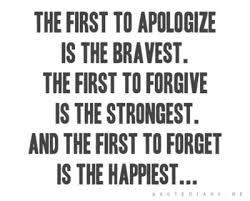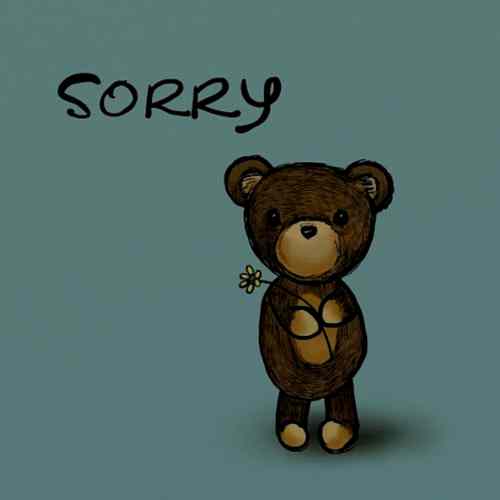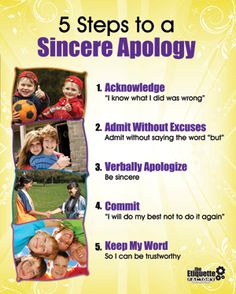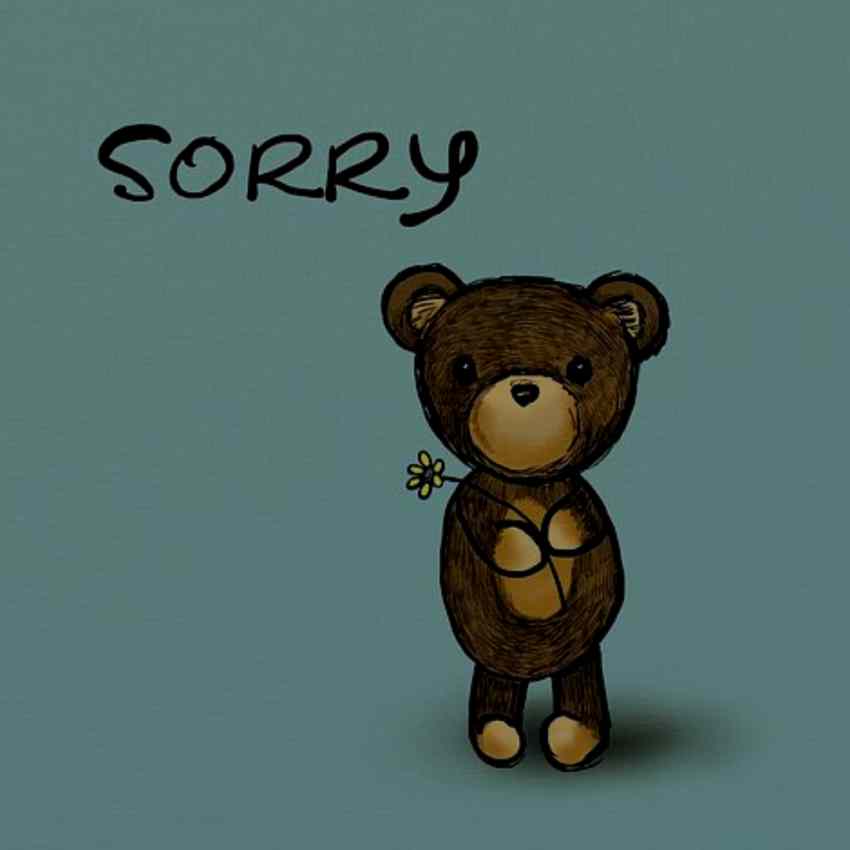
An apology is an expression of remorse for something you’ve done wrong. It occasionally serves as a request for forgiveness, as well. Apologizing for a mistake might seem like an impossible task, but you can get through it by swallowing your pride and putting your best foot forward.
An honest and sincere apology has the potential to restore dignity and diminish fear of retaliation or even desire for vengeance on the receiving end. On the giving end, it can be a powerful tool to reconcile a working relationship and to initiate the restoration of trust. Accordingly, an apology can show the strength of character, demonstrate emotional competence and reaffirm that both parties share values in their relationship they want to commit to.
Growing up, saying the words “I’m sorry” was not an issue to me because my parents taught us to always apologize when we do wrong or hurt someone’s feelings. What they didn’t teach me was how to handle being mocked for apologizing. In secondary school, my classmates mocked me because I was always the first to apologize regardless of whether I was right or wrong. I apologized to keep the peace. After going through the hazing, I decided to stop saying the words “I’m sorry” to anyone. It was years before I could say the words again.
Teaching our children to apologize and its value is a key part of raising well-rounded individuals.
Children aren’t always sorry for the things we think are worth an apology. And even when they are, many have a hard time uttering those two little words. Some kids may actually blurt out “I’m sorry” too easily—and consider it a quick way to satisfy adults and get back to play.
Teaching a child when to apologize and how to make amends for hurting someone—whether it was with a playground shove or a broken promise—is a gradual process. But when a child knows how to say he’s sorry, he gains more than social skill. He also learns how to undo his mistakes, takes responsibility for his actions, and consider others’ feelings.
Apologizing helps your child accept responsibility for a wrong and provides a tool to make things right again. It helps the child dig himself out of a hole. It clears the air, helps heal the relationship, and gives it a new beginning.
Below are some tips on how to teach your children to apologize;
- Model apologizing:
When you’ve acted wrongly, admit it. Apologize when you overreact: “I’m sorry I yelled at you. You didn’t deserve that outburst. I’ve had a hard day.” Everyone makes mistakes; that’s life. Teach children to apologize by showing them that everyone apologizes; it makes life better. These are valuable lessons for a child to learn. Saying “sorry” to your child is not a sign of weakness, but of strength. Even “the boss” should apologize if his or her actions are unkind. A child, who has never been apologized to, won’t understand the apology process, and more than likely he’ll refuse, turning a potentially beneficial moment into a standoff with hurt feelings.

- Start young:
Toddlers quickly learn to give a hug to “make it better” when they hurt someone. If you model hugs for hurts at home, he’ll know just what to do. Once he’s calm and ready to hug, you can verbalize a simple apology and maybe help him say it with a hug.
- Forgiveness follows apologies:
Apologizing and forgiving need to happen after someone gets hurt or offended. For most everyday squabbles we tell our children that we want them to “make peace” with whomever they are at odds with. It doesn’t need to be a formal apology scene. We leave it up to them to figure out what “make peace” really means and how to do it. Sometimes they use words, sometimes they don’t. But we all know if they have or haven’t. In order to live in the same house together, siblings need to be at peace with one another. An apology without forgiveness is an incomplete process and part of how you teach children to apologize. For real healing to happen, the one offended needs to “drop the charges” by saying; “that’s okay” or “I forgive you.”
- Say “excuse me”:
Children belch, gulp, and fart/pass gas. Boys especially delight in showing off their body sounds. If one unintentional belch gets laughter, you can imagine what will follow. But if these sounds meet with silence or mild disapproval from you, they will soon fizzle away.
Teach children that, in a company, breathing sounds (that is sneezing and coughing) are okay but digestive tract sounds are rude. When your child emits upper digestive tract sounds in your presence, look disapprovingly, and say “excuse me.” Require the older child to excuse himself. Passing gas is especially offending because of the odor accompanying the sound. As your child gets older he will learn he can control this function most of the time and do it in private. If passing gas becomes a habit, the offender will quickly be taught by peer disgust to keep it to himself. As kids mature a bit their gut sounds diminish; these offenses will soon be the sounds of the past.
- Stop manipulating feelings and orchestrate sincerity:
Some children learn to parrot an “excuse me” or “I’m sorry” within a millisecond of the offense to avoid being “squealed on” or to get themselves off the hook quickly if parents force apologies. As you teach children to apologize, remember: parents can’t force feelings. Only the child knows how he feels. Forcing feelings can teach your child to fake apologise and that it’s okay to be insincere, or that forgiveness has to be an instant thing which is not real life.
Depending on the ages of the children, their temperaments, the circumstances, and the emotions that may be flaring, a cooling-off period before an apology will be needed. A two-year-old who just kicked his sister may need a two-minute time-out on a chair, along with a reminder that kicking hurts before he’s ready to hug her. A ten-year-old who slaps her sister for vicious teasing must deal with wounded pride before she’ll be able to remember how wrong it is to slap. It’s your job as a parent, to make sure the apology happens so both children can start again with good feelings between them. But, you cannot make it happen. What you can do is model and instruct; “When people are at peace with each other they feel better inside.”
- Lose the lecture:
Lose the lecture about misbehaving and replace it with questions to help your child understand his/her emotions and actions. Start with, “What were you feeling when you ripped John’s homework in half?” This helps to teach that she should take responsibility for her emotions and that while it’s okay to feel angry, sad or frustrated, the action that resulted was not. Next, tie that feeling and action to the effect it had on the other person. “How do you think it made your brother feel when you tore up her homework?”
- Don’t insist:
Encourage but don’t force your child to say he’s sorry. That can make the situation worse and even more embarrassing, and no one will feel good about an apology under those circumstances. If your child snarls “I’m sorry!” just to end a standoff, it’ll be a meaningless apology that doesn’t teach him anything.
- Keep your own anger in check:
Instead of saying, “Apologize right now or you’re going to be in trouble!” try “When you find a way to make your friend feel better, you can play with her again”.

Express to your child that an apology offers healing for both sides. An apology says “I know I hurt you” and “I feel bad about it.” “It is a healing message for both the victim and the perpetrator and allows both to move forward in the relationship says Zerner.
Always remember; Apologies are meaningless unless you change the offending behavior



